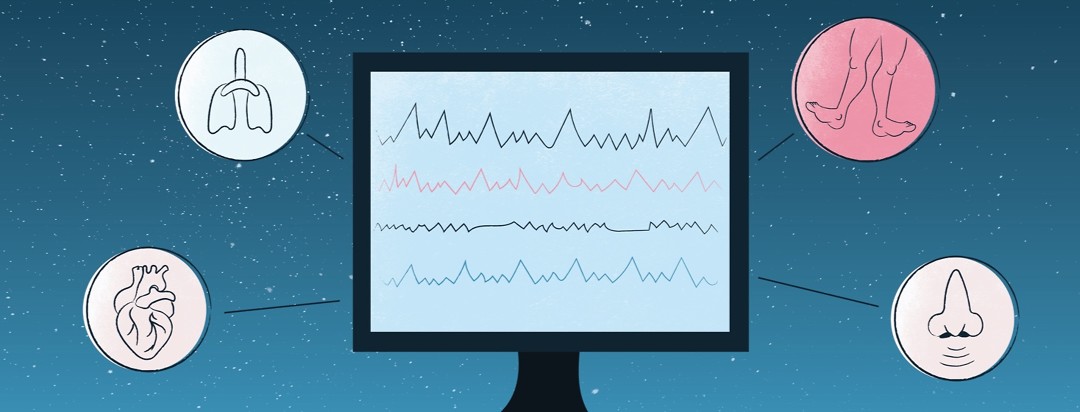Sleep Tests 101: Polysomnography
I hope for your sake you haven’t been through every type of sleep test. I haven’t been through one yet, which multiple patients have told me I should before conducting one. Naturally, they are just poking fun at me.
If you’ve ever been through a sleep study before, it’s still very unlikely you’ve been through every type of test before. In today’s article and future ones I would like to give you short summaries on what different types of sleep tests do and the purposes behind them.
What is PSG (polysomnography)?
PSG stands for polysomnography. Just for fun, I’ll break down this big word. Polysomnography is made up of 3 different words: Poly, Somno, and Graphy.
Poly means multiple, probably a reference to the multiple areas it’s testing for. This test is monitoring the breathing, heart rate, heart rhythms, legs, snoring, and sleep stages.
Somno is the Latin word for sleep. Naturally, that is what we are looking for: What does the breathing look like when a person is asleep? The same goes for oxygen levels, heart rate, leg movements...Yes, I could go on, but I won’t. But we are looking at what happens when a person is asleep.
Graphy means to record. That’s actually what we are doing, recording all the information to make a proper diagnosis.
What is being recorded during a sleep study?
I’ll do a quick summary of all the areas we’re recording from:
- Legs: We’re testing for periodic leg movement disorder. That’s where a person kicks their legs in their sleep.
- Respiratory belts: The belts are mostly used to help us determine what type of apnea a person has.
- EKG (electrocardiogram, also abbreviated ECG): This helps us to see heart rhythms.
- Pulse oximeter: This shows us heart rates and oxygen levels. This can help us determine if someone has sleep apnea or needs to wear oxygen at night.
- Body position: This device is attached to the respiratory belt. It monitors what position someone is sleeping in. This is important in determining whether sleep apnea is position-dependent.
- Snore mic: This lead is placed on the neck and feels the vibration from the snores.
- Chin EMG (electromyogram): These leads are placed around the chin and help us determine what sleep stage a person is in. It can also help us pick up bruxism or teeth grinding.
- Eye leads: Similar to the chin leads, these help us determine what stages of sleep a person is in.
- EEG (electroencephalogram) leads: These leads are placed on your head and help us determine what stage of sleep you are in. The 4 stages of sleep are stage 1 (light sleep), stage 2 (medium sleep), stages 3 (deep sleep), and rapid eye movement or REM (dreaming stage).
- Respiratory signals: The signals are placed inside the nose (don’t worry it isn’t painful, just annoying). The purpose of the respiratory signal is to measure the breathing or in the case of sleep apnea, to measure partial or no breathing.
I hope this gives you greater insight into one of several types of different sleep tests I’ll be covering in the future. Please feel free to comment or bring questions you have. Also, share your story how you were diagnosed with sleep apnea below.

Join the conversation